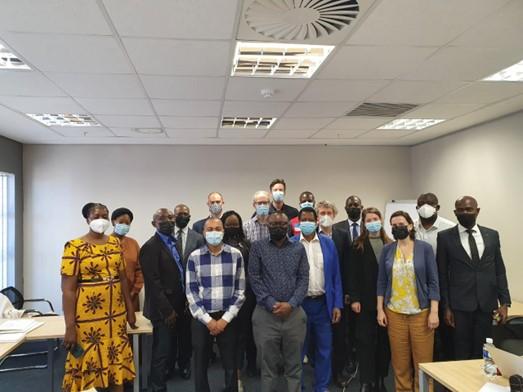Southern Africa strengthens transboundary risk management

UNDRR and the Southern African Development Community (SADC) organized a workshop to enhance coordination mechanism at the regional, sub-regional and national level for early warning systems and transboundary risk management (TRM). The workshop was held from 29-31 March 2022, at SADC headquarters in Gaborone Botswana. Representatives from Malawi, Mozambique, UR Tanzania, and Zambia attended the event which was supported by the EU Humanitarian Aid project entitled “Malawi / SADC Strengthening Disaster Risk Resilience through Enhanced Coordination Mechanism.”
Since early 2022, a range of consultations and workshops took place to address loss data collection, analysis, and their importance in informing early and anticipatory action. In Malawi, the project enabled the assessment of the early warning systems (EWS) at the national level and put in place an open source platform that will improve the use of risk information and strengthen inter-institutional collaboration by streamlining knowledge sharing. The same platform is also in use in Mozambique and UR Tanzania.
The multi-country workshop focused on disaster loss data and its impacts on anticipatory action and data for impact-based forecasting. Special attention was given to sharing TRM good practices, considering that the four countries share borders. The state of play for regional and national EWS and early action supported by UNDRR’s technical partners 510, the Data & Digital initiative of the Netherlands Red Cross and the CIMA Research Foundation, was also examined.
510, the Data & Digital initiative of the Netherlands Red Cross facilitated the first and second day with a range of sessions dedicated to the benefits of loss data. The session started with an introduction to the concepts around data ecosystems (i.e. data demand, infrastructure, actors, and governance) to reach a common terminology. Participants presented on their initiatives for improved data collection and management. Malawi outlined platforms for loss data collection and analysis and presented the new Disaster Risk Management Information System (DRMIS) system to integrate this data into a single platform. Mozambique, showcased how satellite and drone data can be combined with secondary data to assess the impacts of floods and cyclones. Mozambique also demonstrated how this data can be visualized in a new integrated platform called Akuko. UR Tanzania reported that a WhatsApp platform is used to monitor data collection at the local level.
510 highlighted that Impact data from at least ten years is of paramount importance for designing and validating trigger mechanisms for early action after sudden-onset disasters such as floods or cyclones. Also, different early actions require loss and damage data on other indicators. However, technical, political, and organizational challenges often hamper the development of high-quality repositories for loss and damage data. Participants explained that the quality of the data supply needs to improve by having a higher coverage of indicators. Data from different sources needs to be standardized and centralized to reduce fragmentation. National disaster management authorities can also develop procedures to obtain and compile data from sector-specific ministries, thereby going beyond the data coming from the damage and needs assessments. Capacity building of information management skills at the national and local levels is critical. Finally, new technologies such as text mining and remote sensing can be used to enrich loss and damage data resulting from the more common surveying techniques.
During the second and third day, CIMA Research Foundation made a presentation on improving transboundary cooperation which is considered a necessity in the case of droughts and floods when transboundary catchments are considered.
Countries were later encouraged to share information on TRM initiatives and processes, focusing on protocols for data and resources exchanges. Finally, countries and SADC were invited to discuss what type of data disaster authorities would need from their peers and what would be the modalities and frequency of this data sharing.